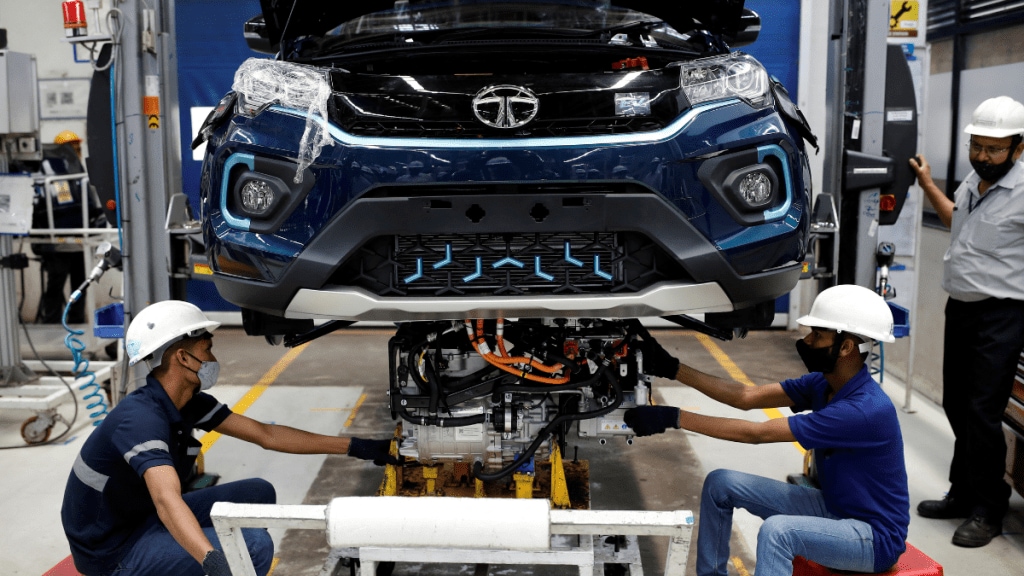Tata Motors shares fell over 5%, hitting an intra-day low of Rs 976 on the NSE after global brokerage firm UBS issued a ‘Sell’ recommendation on the stock. UBS has set a price target of Rs 825 per share, implying a potential downside of 20% from Tuesday’s closing price.
The stock has already declined 12% from its record high of Rs 1,179, which it reached on July 30, 2024. In its note, UBS raised concerns about Tata Motors’ British subsidiary, Jaguar Land Rover (JLR), particularly the rising discounts on its premium models.
JLR Discounts and Slowing Demand
UBS questioned whether investors should be worried about the increasing discounts on JLR vehicles, specifically on models like the Defender, Range Rover, and Range Rover Sport. While these premium vehicles have helped boost JLR’s average selling prices (ASPs), demand for these models is showing signs of slowing down.
The brokerage highlighted that JLR’s order book has fallen below pre-pandemic levels, suggesting that the company may soon need to offer more discounts on its Range Rover lineup. This, in turn, could impact Tata Motors’ financial performance.
Margin Risks at JLR and Tata Motors India
In addition to potential discount pressures, UBS pointed out further downside risks for Tata Motors, citing possible margin slippage both at JLR and within Tata’s Indian passenger vehicle segment.
JLR’s Performance in June Quarter
For the June quarter, JLR reported a 5.4% increase in revenue, reaching £7.3 billion. The company’s operating margin, measured as earnings before interest and taxes (EBIT), improved by 30 basis points to 8.9%, driven by favorable volume, product mix, and material cost improvements.
However, JLR also noted potential challenges ahead. The company expects constrained production in the second and third quarters due to the annual plant shutdown and disruptions caused by flooding at a key aluminum supplier.
The outlook for Tata Motors remains cautious, with UBS suggesting that investors closely monitor the evolving situation at JLR and the company’s margins in its domestic operations.
